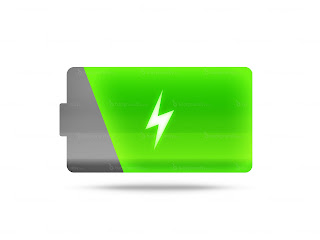Lithium polymer batteries are rechargeable and use polymer electrolytes as an alternative to liquid electrolytes. These lithium-ion batteries provide higher energy compared to other types of lithium batteries. In addition, Lipo batteries offer manufacturers a wide range of advantages, so a variety of shapes can be produced. They are used in serious applications requiring weight, including mobile phones, computers and radio-controlled aircraft. Lithium batteries have pros and cons, and there are some features to check before choosing a good battery. Let’s take a look below!

What are the advantages of lithium-ion polymer batteries?
Energy Density
Lithium-ion has twice the energy density of standard batteries. Additionally, the Lipo offers 3.6v, which is three times more than other rechargeable batteries like NiMH and NiCd. As a result, batteries are able to deliver higher currents for critical applications.
lack of memory effect
The memory effect is the process by which repeated charge or discharge cycles cause a battery to decrease in capacity. Li-ion polymers have no memory effect, which is a common effect in Ni-MH and Ni-Cd technologies.
low discharge rate
Lithium-ion batteries have an average discharge rate of about 1.5% to 2% per month. Additionally, they do not contain toxic cadmium; therefore, they are easy to handle.
safe
Many attempts have been made to manufacture rechargeable lithium batteries. This is because lithium metal is not stable during charging. To this end, research has shifted from metallic lithium batteries to non-metallic lithium batteries using lithium ions. Although lithium ion has a lower energy density compared to lithium metal, it is safe. Add safety measures by following precautions when charging or discharging.
low maintenance
Lithium-ion batteries require less maintenance than other batteries. Therefore, they do not need loops to maintain their life cycle.
What are the disadvantages of lithium-ion polymer batteries?
overheat
While lithium-ion technology is superior, it also has drawbacks. Batteries can overheat and therefore be damaged under high pressure. This problem can lead to burning and thermal runaway.
Security Mechanism
Lithium ions require safety mechanisms to reduce internal pressure and voltage. These issues tend to reduce performance and add weight.
fragile
Lithium ions are fragile and require protection circuits for added safe operation. The built-in protection circuit does not allow the battery voltage to drop during discharge. Most battery packs limit the maximum charge current and discharge to 1C and 2C. Eliminate lithium plating by following precautions such as monitoring temperature.
Ageing
Aging is a serious problem, and lithium-ion batteries age. That means the battery could fail within two to three years. However, other technologies also suffer from this problem. For example, nickel metal hydride ages rapidly when exposed to extreme temperatures. Store batteries in a cool, dry place to limit the aging process. The recommended temperature is 15 degrees Celsius. Also, charge the battery to 40% during storage.
transportation
Lithium-ion batteries have massive shipment restrictions and are therefore under control. However, this limitation does not apply to personal batteries. This applies to international and domestic shipments by sea, land and air. Also, the lithium content depends on the number and capacity of cells in each battery pack. Any lithium content above 1.5 to 8 grams per battery is classified as a hazardous material.
expensive to make
Lithium-ion polymer batteries are expensive to manufacture, about 40 percent higher than nickel-cadmium batteries.
How to choose a high-quality lithium-ion polymer battery?
The following characteristics should be considered when selecting a high-quality lithium-ion polymer battery:
capacity
The capacity of the battery is displayed in ampere hours. It can be increased by connecting batteries in parallel. Multiply the voltage by the capacity to get the amount of electricity stored in kilowatt-hours.
size
The correct size of the battery is calculated by calculating the daily consumption and dividing by the current voltage. You can get the minimum power by dividing the result by 0.5.
Voltage
Battery voltage is displayed in volts (V). The normal voltage is 3.6V/cell, and other manufacturers produce 3.70V/cell. For this reason, they gain a market advantage because high voltages add watt-hours.
Lithium-ion batteries have become the most promising and fastest growing batteries on the market. Today, such batteries are gaining acceptance from buyers. It also provides a huge electrochemical potential and gravimetric energy density. It is a safe battery and low maintenance.
>>>>>>>>>>>Battery
Thanks for reading, hope it helps!
Friendly reminder: If you need to replace the battery of your device, this battery store will be a good choice: www.batteryforpc.co.uk




